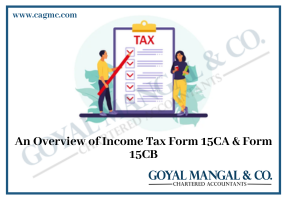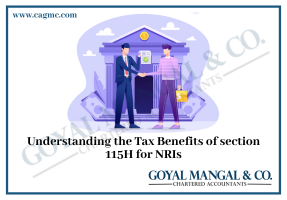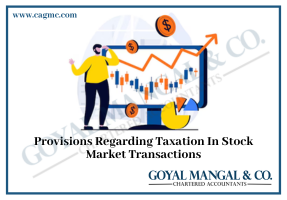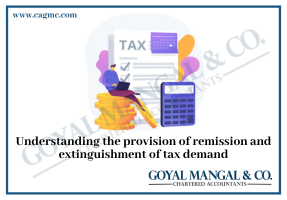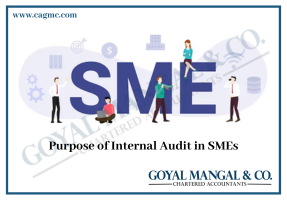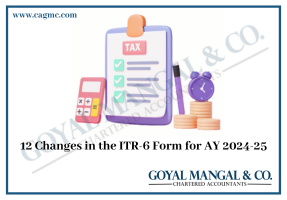
The objective of SEZ was to attract foreign investors by giving tax breaks and single window clearance etc. However, this policy only applied through various amendments in different laws and executive orders and was in a dire need of a robust framework as the policy was not nearly as good as China’s SEZ framework. It was only till 23rd June 2005, SEZ Act, 2005 was passed by the assent of the President of India. This Act along with SEZ Rules, 2006, became the sole statute covering all the legal and regulatory aspects of the SEZs along with units set up under it. In the Act, SEZs are defined under Section 2(za) as any area which is notified by the government after prescribed requirements under the Act as “Special Economic Zone”. This Article we will learn about special economic zone and discuss how supplies from DTA to SEZ attract export duty.
Introduction
Recently Government of India imposed Export Duty on Certain Steel Items in a Notification Dated 21st May’2022. Immediately doubts were raised whether such Export Duty is Applicable for Supplies from Domestic Tariff Area) DTA to SEZ? In this Article we will learn about special economic zone and discuss how supplies from DTA to SEZ attract export duty.
Special Economic Zone
A special economic zone is a geographical region that is designed to export goods and provide employment. SEZs are exempt from federal laws regarding taxes, quotas, FDI banks, labour laws. A Special Economic Zone (SEZ) is a geographical region that has economic laws more liberal than a country’s typical economic laws. Furthermore, They are established with an aim to purport development, promote rapid economic growth by providing tax and business incentives for attracting foreign technology along with investment. These are not merely SEZ’s but may be called as “favourite Investment destinations” for foreign establishments. Such units would be future sources of employment, hubs of latest technologies and equipped with the best infrastructure. Whereas, today, there are approximately 3,000 SEZs operating in 120 countries.
History of Special Economic Zone
In 1965 India experimented with the concept of such units in the form of Export Processing Zones. Furthermore, A revolution that had come in 2000 when the commerce minister made a tour to the southern provinces of China. After the visit he incorporated SEZs into the Exim Policy of India. Furthermore, after 5 years SEZ Act 2005 came into force and rules got formulated in 2006. Government took the initiative of enacting the SEZ Act keeping in mind various objectives including generation of additional economic activity, promotion of export of goods and services, attracting investment from foreign sources as well as domestic along with creating employment opportunities at all levels. Following the SEZ Act,2005 came the rules in 2006 that lay down comprehensively how a zone first may be classified specifically and then establishment of a unit in that zone, the procedural requirements and other miscellaneous provisions.
Categories of Special Economic Zone include
- Free trade zones
- Free zones
- Industrial Park or Industrial estate
- Urban enterprise zones.
Objectives of special economic zone
- Generation of additional economic activity
- Promotion of exports of goods and services
- Promotion of investment from domestic and foreign sources
- Creation of employment
- Development of infrastructure facilities.
- Simplified procedures for development, operation, and maintenance of special economic zones for setting up units and conducting business.
- Single window clearance for setting up of a SEZ and a Unit In SEZ.
- Easy compliance procedures and documentations with stress on self-certification.
Benefits of Special Economic Zone
- Investment of the order of Rs 100,000 crore including FDI of US 5-6 billion
- 500,000 direct jobs
- At the present there are 1016 units in operation in SEZs. Furthermore, providing direct employment to over 1.79 lakh persons.
- Exports from the SEZs during the 10-year period could touch 352 billion dollars, nearly half of India’s total annual exports.
Features/provisions of SEZ Rules
- Different land requirement for different class of SEZs
- Every SEZ is divided into a processing area where alone the sez unit would come up whereas, the non-processing area where the supporting infrastructure is to be created.
- Single window clearance for setting up of a SEZ
- Single window clearance for setting up an unit in Special Economic Zone.
Tax Benefits in SEZ
- Deduction from profits and Gains from export of goods/benefits as follows (Section 10AA)
100% income tax exemption for first 5 years
50 % income tax exemption for next 5 years
- Exemption from Dividend Distribution Tax
- There should No import duty on goods imported
- No excise duty on goods procured from DTA (domestic tariff Act)
- Service tax is not present in services availed from DTA (domestic tariff Act)
- No Central Sales Tax on goods procured from DTA
Customs duty is a variant of Indirect Tax and is applicable on all goods imported and a few goods exported out of the country.
Supplies from DTA to SEZ attract export duty
Customs Duties are Levied on Imported Goods. Whereas, Incentives provided encourages exports. A country may however sometimes Restrict Exports and wish to protect its home industries and make available adequate supplies of Goods, Raw Materials, Commodities and Inputs for Industries for Further Value Creation in their own Country and to Mitigate Shortage or Scarcity of Goods. Furthermore, to Discourage Exports from the Country Export Duty has been imposed. Export Duties act as an effective means for protection for domestic industries and Duty is Levied on goods exported from a country based on Specific, ad valorem (on Certain Percentage of FOB Value), or compound which is a combination of both.
As per Third Proviso to Rule 27 of SEZ Rules, 2006 (Inserted Vide Notification 19th Sep’2018) it “Provided that supplies from Domestic Tariff Area to Special Economic Zones shall attract Export Duty, in case, export duty is leviable on items attracting export duty.” Whereas, Moving in to rein in input prices and control runaway inflation, the government on May 22 imposed an export duty of 15% on select pig iron, flat-rolled products of iron or non-alloyed steel, bars and rods and various flat-rolled products of stainless steel and another 45% on iron ore pellet etc. in Notification Dated 21st May’2022. So, as per Third Proviso to Rule 27 of SEZ Rules, 2006, it is Very Clear that Export Duty on Certain Steel Items is Applicable in case of Supplies from DTA to SEZ.
Conclusion
Recently Government of India imposed Export Duty on Certain Steel Items in a Notification Dated 21st May’2022. As per Third Proviso to Rule 27 of SEZ Rules, 2006, Clearly Export Duty on Certain Steel Items is Applicable in case of Supplies from DTA to SEZ.


